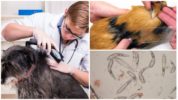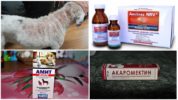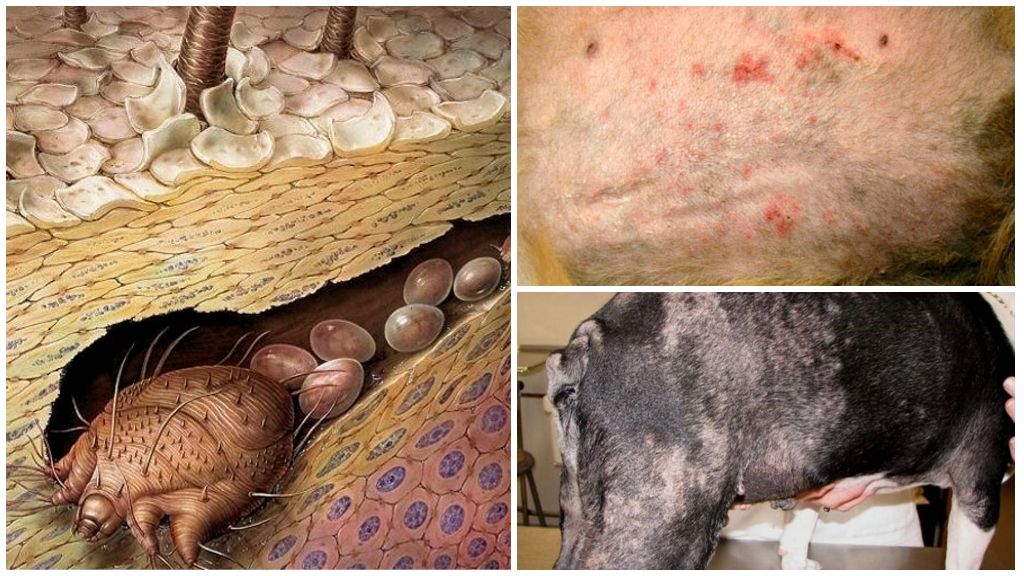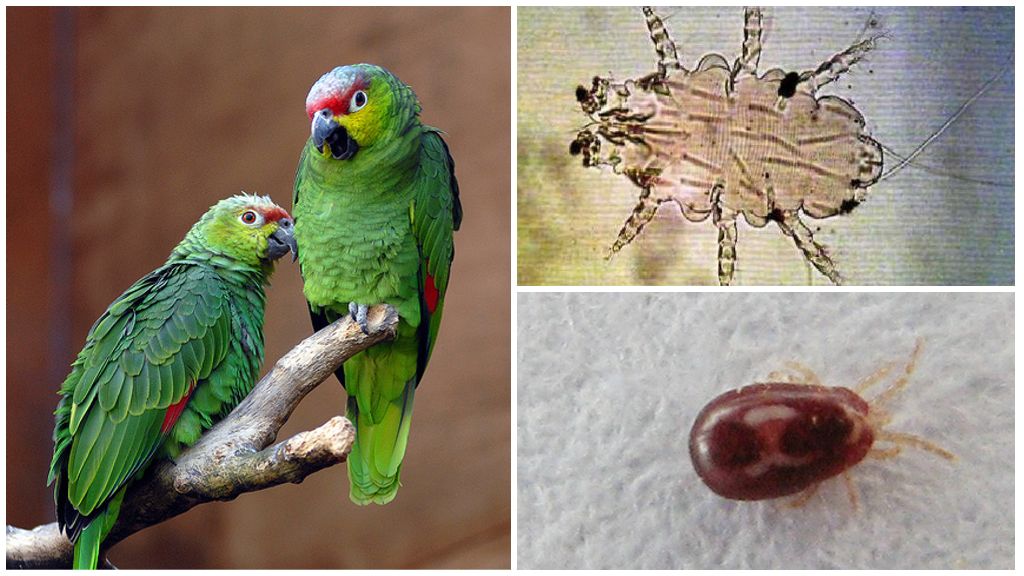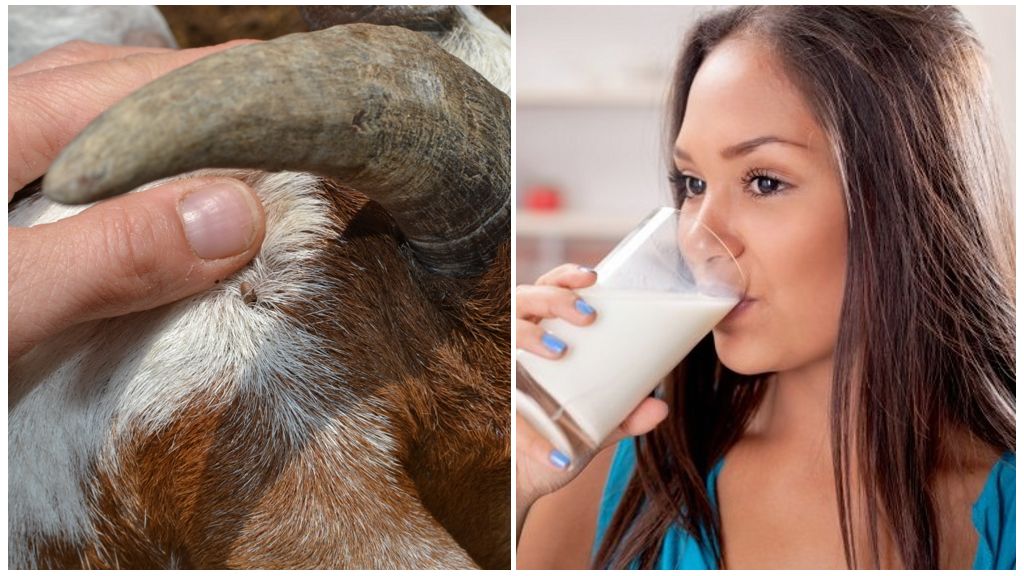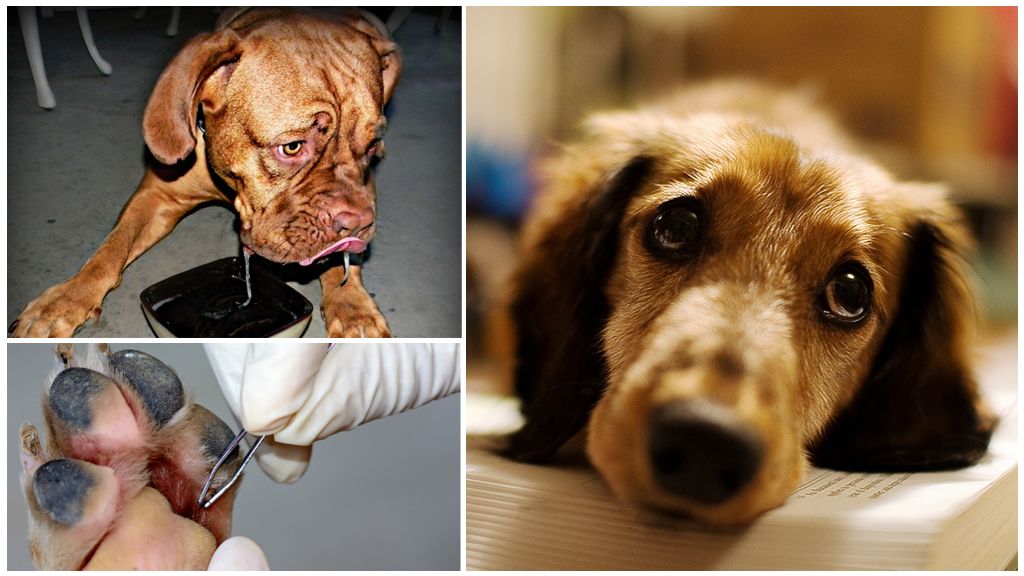- Demodecosis in dogs
- Diagnosis of Demodicosis in Dogs
- Dog Demodecosis Treatment
- Dog Demodecosis Treatment
Demodecosis in dogs is a common disease. It appears between April and October. Demodecosis is transmitted from sick animals - domestic, stray dogs, contagious to humans. An increased risk of disease in young pets is up to 1 year old, older - after 10 years, as well as some species of breeds. The treatment is long, complex. Diagnosed during examination, by analysis of scraping.
Causative agent of infection
Provokes the development of the disease demodex tick. Conditionally pathogenic microorganism is constantly present on the body of an animal, bird, person. It is localized in hair follicles, sebaceous ducts. It feeds on secretions of fat, particles of the epidermis.
On a note!
When the dog is in good health, the tick does not manifest itself in any way, it even benefits by cleansing the skin of excess fat. Decreased immunity, metabolic disturbance leads to a change in the chemical composition of the “food” of the subcutaneous tick. Demodex releases a toxic substance, dies after a few days. It is death and decomposition of the parasite that provokes the appearance of unpleasant symptoms on the skin.
Demodecosis is dangerous for others, transmitted from sick dogs, contagious to humans. But how effective its development on new skin will be depends on the state of the dog’s immune system. Young pets under the age of 1 year are affected, as well as old ones from 10 years old. Most often, representatives of the following breeds become infected:
- German Shepherd;
- boxer;
- collie;
- rottweiler; German dog;
- English bulldog;
- sheltie;
- French Bulldog;
- scotch terrier;
- West Highland White Terrier;
- smooth haired dachshund.
Detected subcutaneous tick absolutely all dogs, but the main role is played not by its presence, but by the quantity.
It is impossible to examine the subcutaneous demodex tick with the naked eye. A magnifying glass or magnifier is required. A close-up photo is presented below. In places of localization of the parasite, a change in the structure, color of the epidermis appears.
Symptoms of demodicosis in dogs
Each animal has its own type of demodex tick, and feline, human is also found in dogs. Symptoms are identical in each case. A person can infect from a dog, but the parasite lives on the body for no more than 30 days, then dies without laying eggs. A sick dog is contagious to other dogs; demodex is transmitted by contact.
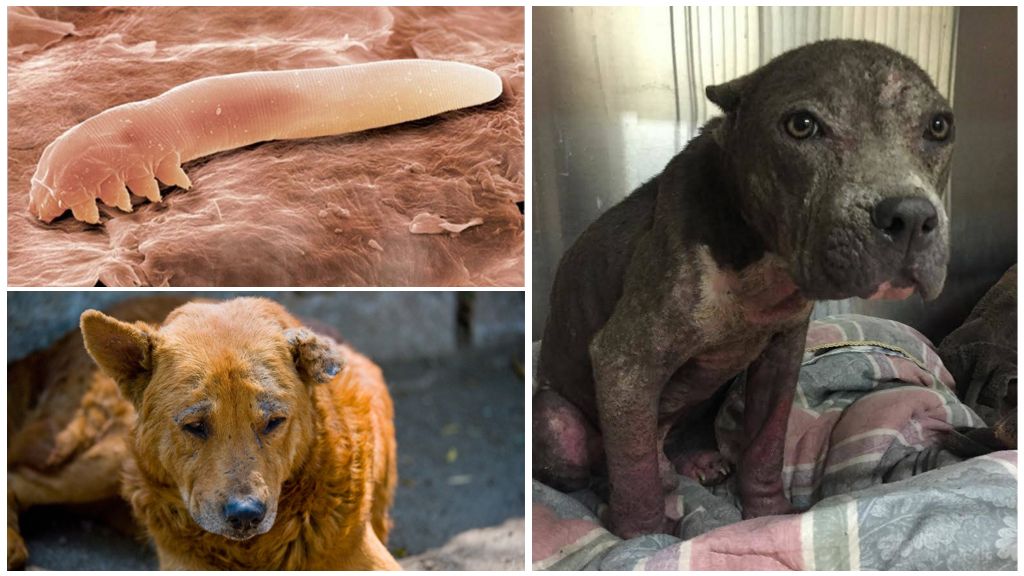
On a note!
A skin disease begins from itching, redness of the skin, peeling, inflammation. Initially, it is local in nature, gradually spreading throughout the body.
The medical history includes several stages, forms of development. Each of them has its own symptoms, which increase as the disease progresses.
Forms of Demodecosis
Specialists distinguish several forms with different characteristics.
- Squamous (scaly). It is characterized by the formation of copper-red color on the paws, scalp.
- Pustular. Vesicles with purulent discharge appear on the body. The epidermis is compacted, bare areas without hair appear.
- Generalized.At the same time, pityriasis scales, purulent formations, sores appear. The disease covers significant areas of the skin, spreads throughout the body. There is baldness.
On a note!
In puppies under 1 year of age, juvenile demodicosis appears. Infected from the mother. With a mild form, special treatment is not required. The condition normalizes as immunity strengthens. Demodecosis in a puppy also appears with genetic tendency, hormonal imbalance, pathologically weak immunity.
The most common form of demodicosis in dogs is localized. The first signs of the disease appear on the head, legs. It all starts with hair loss, redness of the skin, the appearance of flakes, peeling. A few days later, itching appears. This also includes otodemodecosis, which develops on the ears from the outside, then moves on to other sites. Generalized demodicosis is rare, requires a long, combined treatment. A photo of demodicosis in dogs is presented below.
Diagnostics
It is possible to suspect the presence of a subcutaneous tick in a dog by external signs:
- hair loss on paws, head;
- redness;
- inflammation;
- peeling;
- purulent formations;
- scratches.
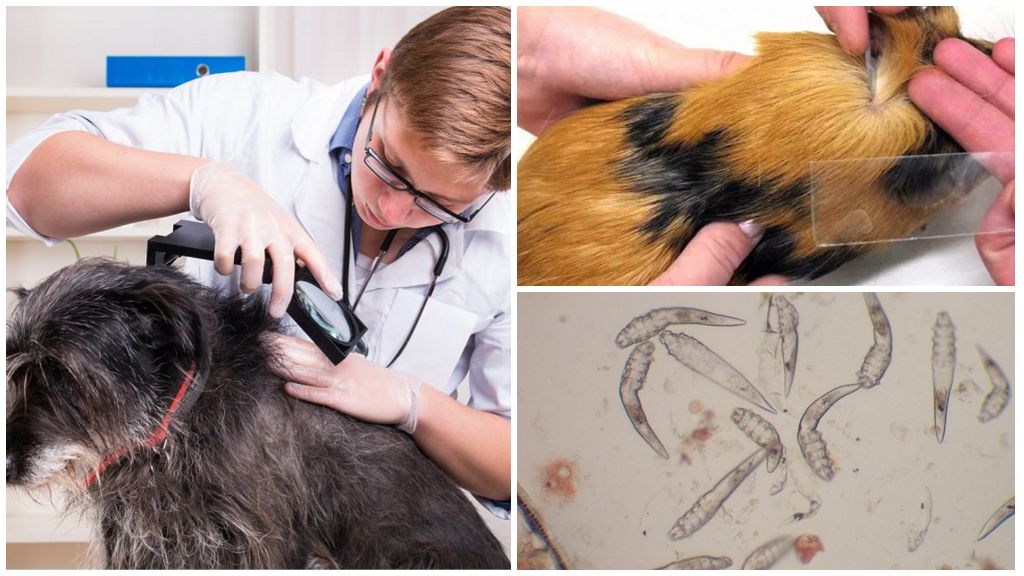
To confirm the diagnosis, do scraping for demodicosis. The procedure is painless, takes a few seconds. Their affected areas of the skin take a scraping, sent to the laboratory for research. A subcutaneous tick is easily detected, the results can be found on the same day.
Dog Demodecosis Treatment
Therapy is long, aimed at the destruction of parasites, the elimination of symptoms, strengthening immunity. Treatment is carried out at home, but you should first consult with your veterinarian. Patients with demodicosis are prescribed antiparasitic drugs in the form of drops, ointments, tablets, and injections. A special shampoo is used. The choice of drugs depends on the form of decodecosis, stage, severity of symptoms.
The basics of treatment in veterinary medicine:
- Long-haired dogs need to be trimmed.
- Treat damaged areas of the epidermis with hydrogen peroxide, chlorhexidine to remove purulent formations, crusts, impurities, scaly accumulations.
- Destruction of the tick remaining near the blood vessels is carried out by drops based on ivermectin, doramectin. The first substance is deadly to collie, sheltie. Apply ointment Yam, Aversectin.
- To remove toxins, improve liver function, the dog is given hepatoprotectors - Karsil, Essentiale, as well as prebiotics and probiotics.
- To quickly restore the skin, prescribe wound healing, antiseptic drugs. Panthenol, baby powder, cream are used.
- If the infection got into the wounds, treat the dog with antibiotics. It is selected individually in each case.
On a note!
Before applying an antiparasitic agent, it is recommended to bathe a dog with a special shampoo with an antibacterial effect or with a sulfur content. Dry the coat, treat the pet.
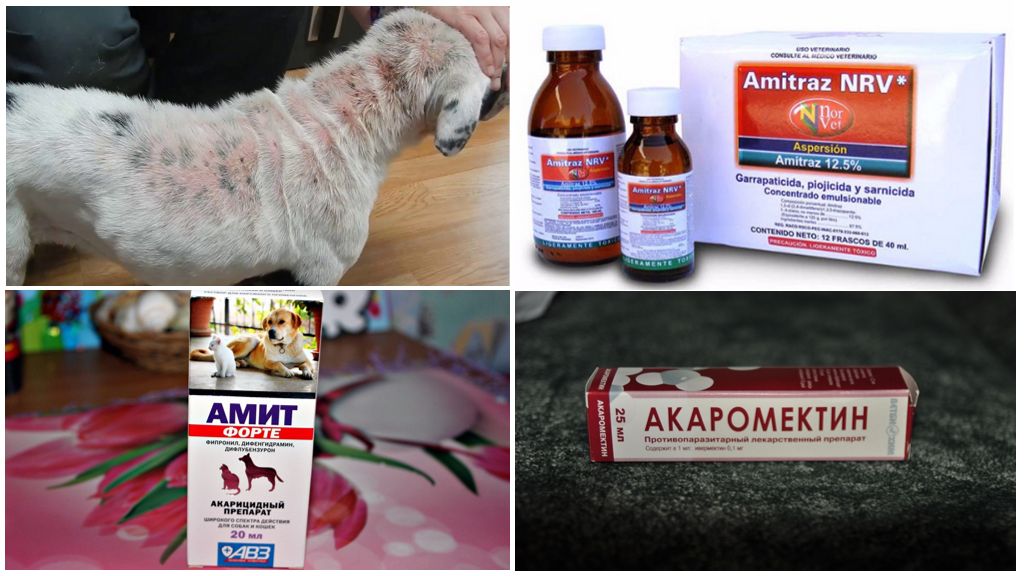
The most common drug that is prescribed at the initial stage of demodicosis is Amitraz. Diluted in water according to the instructions, immediately before use. Wool is dried with a hairdryer without using a towel. The treatment is repeated every 14 days until a negative result is obtained after the scraping analysis.
Treatment with tick drugs is prescribed by a specialist, the scheme may include:
- Prazicide complex;
- Amit Fort;
- Acaromectin;
- We are waiting;
- Ivermek Spray
- Dekt;
- Amidel gel;
- Dana ultra.
For the treatment of generalized demodicosis, injections are made. The drugs have a lot of side effects, so the treatment is carried out under the supervision of a veterinarian. Use Aversectom, Eprimek. The drug is administered once or with an interval of 10 days.
Common treatment regimens
Each case is considered by specialists individually, the complex of drugs is selected based on the severity of the disease, the age of the dog, the individual characteristics of the body.
The scheme for demodicosis with a secondary infection:
- Nystatin with tetracycline - 10 days. After 7 days Trichopol - 10 days.
- Marasasd every five days three times. It has a bactericidal, fungicidal property with a weak acaricidal effect, accelerates the skin recovery process, accelerates hair growth.
- Zooshampoo keratolytic action to soften the crusts before applying the oil emulsion.
- Ectomine is an emulsion for washing the affected areas.
Additionally, Carsil, probiotics are used, diet food is prescribed.
Scheme 2 with injections:
- Subcutaneous administration of Ivomek twice with an interval of 7 days. Dose 0.2-0.3 ml per 10 kg of body weight of the dog.
- Sulfur-tar ointment for external use. The first week daily, then 1 time in 7 days.
- Alimentary (food) sulfur (5 mg / kg). Give for a month.

To enhance the therapeutic effect, eliminate unpleasant symptoms, an antihistamine is prescribed inside.
Scheme 3:
- Antibiotics to kill a secondary infection.
- Imaverol for skin treatment.
- Tea tree oil to accelerate the recovery of the epidermis, stop inflammation, relieve itching.
- Chlorhexidine (miramistin) for disinfection, elimination of crusts.
The use of therapeutic shampoo 1 time per week until complete recovery.
Feedback
Last year, my dog fell ill with demodicosis. first noticed a hair loss on the legs, then on the head. He whined plaintively, itched. We went to the veterinarian, did a scraping, the diagnosis was confirmed. Assigned a comprehensive treatment. The skin condition began to improve after a day, but the dog himself felt bad for another 10 days. They were given side effects of medication. Then probiotics shoved him for another month, Carsil. Healed. We drink vitamins to strengthen immunity.
Elena, St. Petersburg
Folk remedies
If demodicosis in dogs is at the initial stage of development, you can use folk remedies. Self-prepared drugs are also used as emergency aid when they have not yet bought medicines or to accelerate the healing of the epidermis after the use of drugs.
- Apply tar soap to wet wool, foam, leave for 5-15 minutes, rinse with warm water.
- The affected areas of the epidermis are treated with kerosene, left for 3 days, washed off.
- Wipe the skin with an apple bite or its solution. 200 ml of water requires 1 tbsp. spoon means. Processing is carried out three times a day.
- Pour boiling water over celandine, insist for at least 30 minutes, filter. Use for wiping, lotions.
- Lubricate the skin with tea tree oil. Eliminates itching, redness, stops inflammation.
If folk remedies do not improve the condition of the dog, you need to seek the help of a veterinarian.
Prevention of demodicosis is to strengthen the immune system, proper nutrition, limiting contact with yard dogs, cats.

